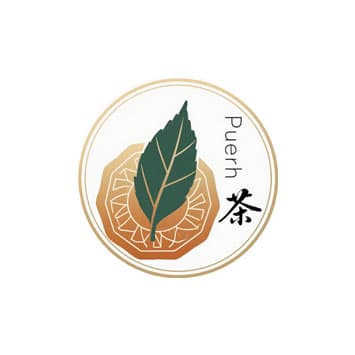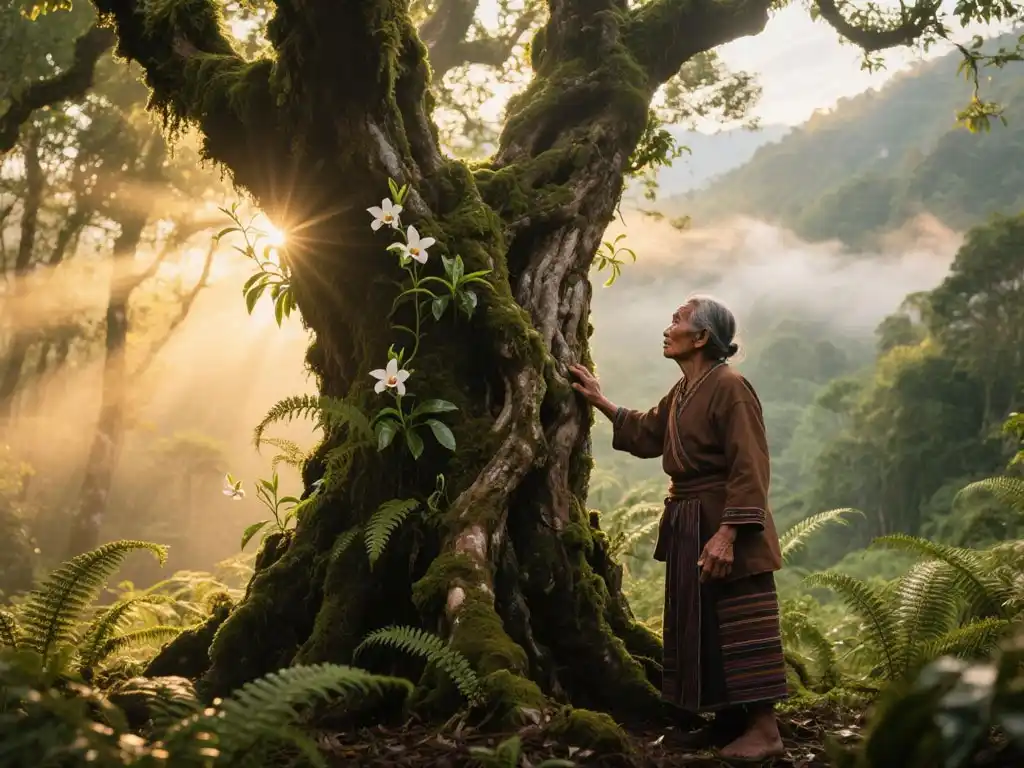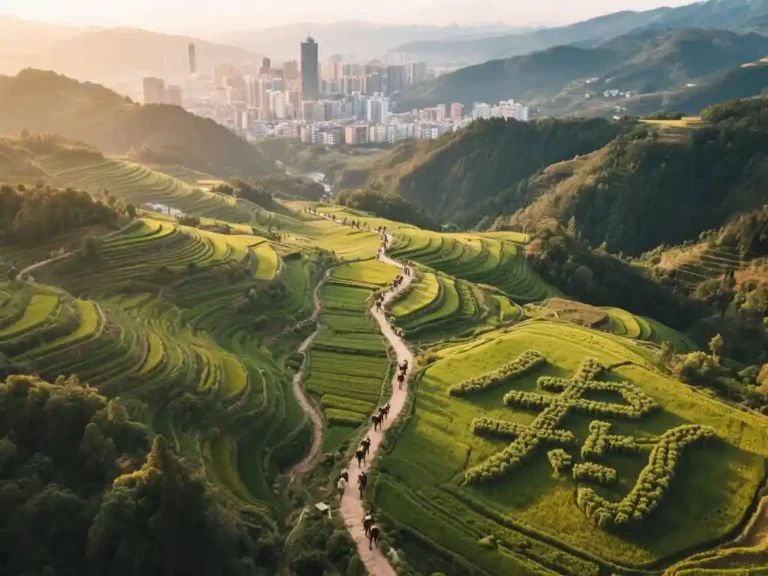Pu’er Tea History: The Millennia-Old Tea Horse Road Journey
Imagine an old tea tree growing deep in the mountains of Yunnan. Its story is the story of Pu’er tea. This Pu’er Tea History is both ancient and fascinating.
Long, long ago, in the dense forests of Yunnan, lived ethnic minorities such as the Blang, Jino, and Lahu peoples. They discovered the value of tea trees at an early stage. The ancient text “Huayang Guozhi” from the Three Kingdoms period (approximately 1,800 years ago) mentions that tribes in southern Yunnan offered tea as tribute to the Central Plains dynasties. The “Man Shu” from the Tang Dynasty (approximately 1,200 years ago) explicitly states that tea was produced in the mountains near “Yinsheng City.” This is the earliest ancestor of Pu’er tea, known as “Yinsheng Tea.”
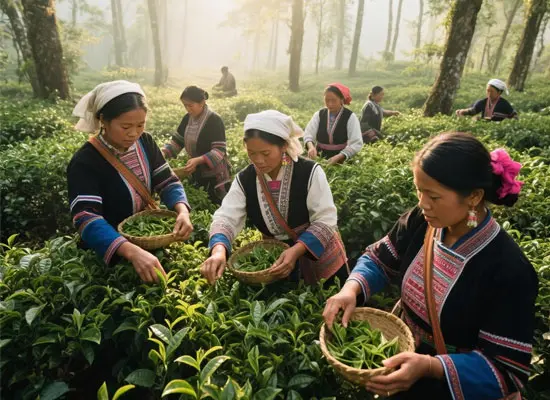
For the mountain people, tea was more than just a beverage. The Blang people domesticated wild tea trees into “Pa’ai Leng” (meaning “tea trees left by ancestors”). The Jino people used tea for ancestral worship. The Lahu people used tea as medicine. Tea leaves were a gift from the forest and the crystallization of the wisdom of these people living on the frontier.
By the Tang and Song Dynasties (approximately 1,000–700 years ago), Pu’er tea began to emerge from the mountains. During the Tang Dynasty, as exchanges between the Yunnan regional government (the Nanzhao Kingdom) and the Central Plains increased, small quantities of Pu’er tea were transported along the ancient trade routes (the Tea Horse Road) into the Central Plains.
The Song Dynasty (approximately 1,000 years ago) marked a turning point. The Central Plains dynasty required a large number of horses, so the “Tea-Horse Bureau” was established in Yunnan (AD 1074). Pu’er tea officially became a strategic national commodity, used to exchange for horses from the northern grasslands. Merchants compressed Pu’er tea into compact bricks or cakes, which were transported by horse caravans.

The caravans traversed the dangerous Hengduan Mountains, overcoming harsh climates, to transport Pu’er tea to Tibet, Sichuan, Shaanxi, and even as far as Southeast Asia. Pu’er tea can be stored for long periods, and its flavor improves with age. Merchants highly valued it, calling it “black gold.” However, due to the perilous and distant journey, Pu’er tea remained a mystery to people in the Central Plains.
The Ming Dynasty (approximately 600 years ago) officially named Pu’er tea. In 1382, Zhu Yuanzhang’s army pacified Yunnan and established the “Pu’er Prefecture” (now Ning’er County). Pu’er tea thus derived its name. Tribal leaders from the border regions began offering Pu’er tea as tribute to the emperor.
Scholars and doctors in the Central Plains recorded in their writings (such as “Dian Lue” and “Ben Cao Gang Mu”) the benefits of Pu’er tea, including its ability to “relieve greasiness and clear phlegm and heat.” Pu’er tea began to transition from a trade commodity into a cultural symbol.
The Qing Dynasty (approximately 300 years ago) marked the golden age of Pu’er tea as a tribute tea. In 1729, Emperor Yongzheng established a dedicated “Pu’er Tribute Tea Factory.” The finest spring tea was produced from the Six Great Tea Mountains (Youle, Gedeng, Yibang, Mangzhi, Manzhuang, and Mansha). These teas were carefully selected, shaped into round tea cakes or tea bricks, and transported thousands of miles to the imperial palace in Beijing.
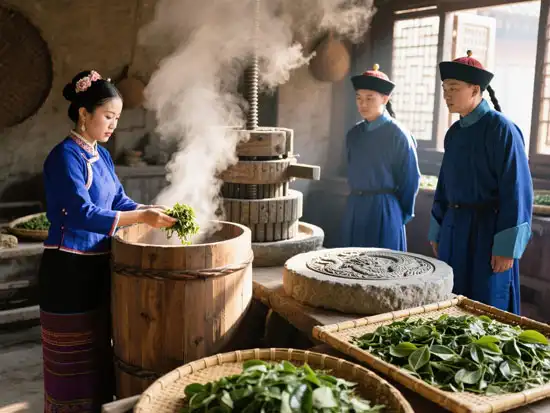
Emperor Qianlong greatly admired Pu’er tea, once composing a poem praising it as “Unique Pu’er, renowned for its strength and resilience” (meaning Pu’er tea is particularly robust and resilient). The renowned writer Cao Xueqin also mentioned “Daughter Tea” (a premium grade of Pu’er tea) in his novel Dream of the Red Chamber, making Pu’er tea an essential part of noble life at the time.
At this time, the Tea Horse Road was thriving. Trade routes extended northward through Dali into Tibet, southward through Southeast Asia to India, and eastward along the Red River to Vietnam. The jingling bells of caravans and the flowing waters of the Lancang River together narrated the story of Pu’er tea and the vast empire.
During the late Qing Dynasty and the Republic of China period (approximately 100-70 years ago), the emperor was no longer in power, and the tribute tea system came to an end. Pu’er tea shifted to civilian trade. The ancient town of Yiwu gained importance, and some old tea houses like “Tongqinghao” and ‘Songpinghao’ produced “hao-level tea” that became very famous. Some teas that have been preserved for over a century can now fetch astronomical prices.
Unfortunately, this golden age did not last long. Wars and bandits left the tea mountains desolate. In 1938, the Dian-Myanmar Highway was completed, gradually replacing traditional horse caravan transportation.
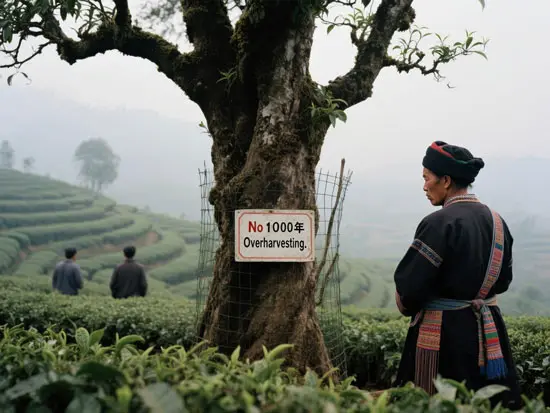
After 1949, state-owned tea factories (Menghai Tea Factory, Xiaguan Tea Factory, Kunming Tea Factory) began producing Pu’er tea. Standardized production made Pu’er tea accessible to the general public. 1973 marked a significant technological breakthrough with the maturation of the “wet pile fermentation” technique. This technique gave rise to “ripe tea.” From then on, the characteristic of Pu’er tea becoming more aromatic with age became a consistently reproducible delightful flavor.
In the 21st century, Pu’er tea experienced a new wave of popularity. The book “Pu’er Tea” written by Taiwanese tea expert Deng Shihai sparked widespread interest. Century-old teas fetched astonishing prices. Ancient wild tea trees (ancient tree tea) were hailed as “drinkable antiques.” Teas from once-obscure places like Bingdao, Laobanzhang, and Jingmai Mountain became highly sought after.
Farmers on tea mountains have once again taken up their ancestors’ tea-picking baskets. Traveling to tea mountains and participating in tea culture festivals have also become popular.
However, prosperity has also brought problems. In some areas, excessive tea picking has caused ancient tea trees to fall ill or even die. Some merchants have passed off ordinary tea garden tea (terrace tea) as precious ancient tree tea. There has also been ongoing debate between large-scale machine production and traditional handmade methods. Pu’er tea serves as a mirror, reflecting the complex mindset of modern people toward nature, tradition, and commercial interests.
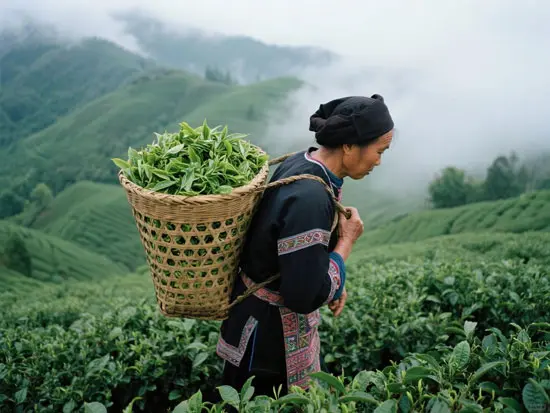
The story of Pu’er tea is too long to tell in full. It evolved from the green leaves used in ancient Yunnan tribal rituals to become a tribute offered at the Forbidden City. It was carried by caravans and also served as a refined item on scholars’ desks. The history of Pu’er tea is the history of the collision and integration between the Central Plains dynasties and frontier regions, the history of the fusion of Han Chinese culture and minority ethnic wisdom, and above all, the history of how humanity interacts with nature.
We need not mythologize it or overhype it. The thousand-year-old tea route that Pu’er tea has traversed is the most authentic and profound story.
Next time you have the opportunity to visit an ancient tea garden in Yunnan, take a moment to touch those old tea trees marked by the passage of time. Their growth rings hold the sounds of caravan bells, the seals of tribal leaders, the sweat of tea farmers, and the silent imprints left by time.
